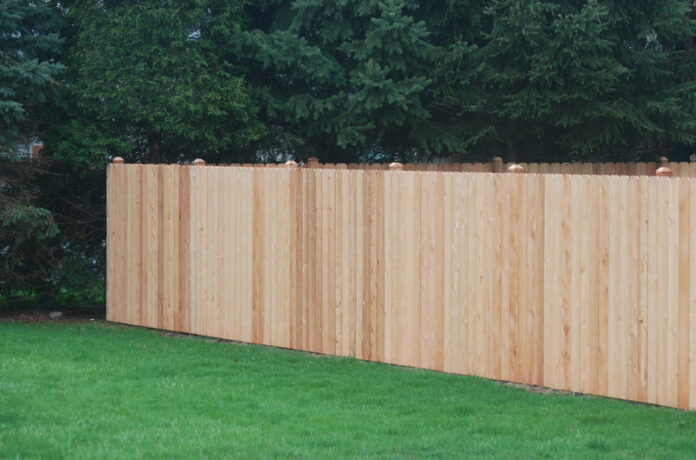
Often this is referred to as property lines, and even though this is a term used by many homeowners, there are a few synonyms that make it appear that it is critical for you to be aware of. Not knowing these limits can lead to disagreements with neighbors and failure to adhere to local ordinances.
In this guide, we go over some easy ways to find property lines without the help of a professional surveyor. Understanding your boundaries helps protect your investment and prevents costly disputes with neighbors.
Consult Property Deeds and Maps
Many deeds contain lengthy, technical, and boring statements describing boundary lines. These set out coordinates and landmarks. Copies can be requested from local government offices if homeowners don’t have them readily available. Maps visually indicate exact lines and neighboring plots. Reading through these documents provides an excellent springboard for understanding your property’s exact dimensions and legal boundaries.
Use Online Resources
There are a host of counties and municipalities that offer something online to allow you to view property maps. With the use of geographic information systems (GIS) technology, these digital platforms enable homeowners to view boundary lines. Users can zoom in on parts of the graph with simple navigation tools. This is a convenient way to check the information that took place in the physical deeds.
Look for Physical Markers
Corner markers, or boundary markers, are typically placed around property at corners, as either stakes or pins. These markers can be metal rods or concrete posts. With time they may be overgrown or even dirtied. These hidden clues can be divulged by walking the perimeter or lightly probing the ground. Recognizing these markers can help put your mind at ease about property boundaries.
Check with Neighbors
Speaking with neighbors also provides further information on boundaries. Those who’ve lived in one place for a longer period of time may offer insights into the break-ups of land holdings. They might have had the same question, and they could help. A key to healthy relations and mutual understanding is open communication.
Employ GPS Technology
Recent technological advances, like GPS devices, can help determine property lines. Located around via satellite data, these devices are often smartphone apps. These are both less accurate than professional surveys, but they give a good enough, reasonable approximation for the majority of scenarios. According to the U.S. Geological Survey, GPS technology has made property boundary identification more accessible to average homeowners. Find a reliable and accurate app or device for your needs.
Surveyor Services
If you need precise and dependable property line details, then there is no option other than hiring a land surveyor. Professional surveyors are experts who measure and map out property lines with high accuracy using specialized technology and equipment. It does cost money to hire a surveyor, but the product is all-encompassing and has legal weight, which makes the survey especially useful if the boundaries of your land are vague, indefinite, or disputed.
Formal land surveying can be used to prevent boundary issues with neighbours, buy or sell land, apply for building permits, and/or comply with local zoning or building laws. The reports that a certified surveyor prepares can serve as legal evidence in court if the need arises. For this reason, whether it’s expensive or not, a lot of property owners consider hiring a professional land surveyor to be a practical and wise choice when clear, accurate property boundaries are important, and they want the boundaries to be legally recognized.
Understand Local Regulations
Property lines are not just physical; there are regulations and zoning laws that define them. These are the legal frameworks that dictate what can and cannot be done with land in particular areas — they’re a big part of the equation when it comes to development and land use. For example, zoning laws could govern setbacks, which are the minimum distance a structure must be from the property line. They might also control the height of buildings, as well as acceptable land uses; fencing and even landscaping may not be allowed. These regulations are important to know, particularly if you are thinking of constructing, developing, or modifying your property in the future.
Non-compliance can lead to fines, stop work orders, forced demolition of non-compliant buildings, etc. To play it safe and to keep yourself fully informed about your rights, you should consider consulting with your local planning or zoning office. The office is a source of detailed guidelines and maps, and the staff can answer questions about your particular property. They may also be able to tell you of any easements, right-of-way issues, or environmental restrictions that may exist. Rather than trying to proceed by trial and error, you take the risk off the table and are in a better position to make good decisions when it comes to the improvements you will make to your land.
Consider Seasonal Changes
Depending on the season, boundary markers might be covered by snow or thick vegetation. On the other hand, it can be the quickest way to locate the edges during those clear-air days if you are already prepared for it. So it seems like investigating when they’re most prominent would be an ideal time to search for your property markers. Be aware of the season when you are searching for or trying to fence property lines, especially if you live in places where there’s lots of foliage or heavy snow. In the spring and summer, getting lost is easier because of overgrown shrubs, grass, and trees that can obscure markers, while in the winter, snow and ice can obscure markers entirely. If you want to increase visibility, consider searching in early spring or late fall, when vegetation is less and the snow is not present.
Metal stakes can be buried, but using tools like a metal detector can assist in uncovering them if your markers are difficult to find. In other instances, the markers themselves may have moved or been covered up over the years, making it more difficult to locate them without help. It will save time if the positions of markers are recorded by GPS or photography during periods of visibility. And, really, being mindful (READ: strategic) about when and how you look for boundary markers is going to be way more accurate and cause much less unnecessary frustration.
Use Aerial and Satellite Imagery
You can see property lines using aerial and satellite images. These images are available through different online platforms, which enable you to see your property from up high. This viewpoint can expose natural features or manmade structures that correspond with boundary language in deeds.
Record and Document Findings
After identifying some boundaries, it is important to document your findings. Photos of markers or landmarks can also help. Keeping detailed notes on your measurements or observations for use when needed in the future is always wise. Keeping them organized makes sure that they are accessible should any questions come up later on.
Conclusion
Property boundaries do not have to be challenging to locate! With the help of some resources and technology, people can figure out their property lines with confidence, especially homeowners. Clarity minimizes disagreements, which promotes good property management. Be it through deeds, maps, or online tools, these methods simply create clear property boundaries.
Find a Home-Based Business to Start-Up >>> Hundreds of Business Listings.
















































